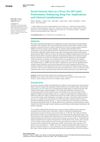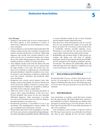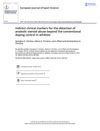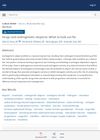Effects of Abuse of Anabolic Androgenic Steroids on Iraqi Athletes
March 2017
in “
Iraqi Journal of Pharmaceutical Sciences
”
anabolic androgenic steroids AAS luteinizing hormone follicle stimulating hormone testosterone prolactin total bilirubin direct bilirubin aspartate transaminase alanine transaminase creatinine urea triglycerides low density lipoprotein-cholesterol very low density lipoprotein-cholesterol high density lipoprotein-cholesterol steroids LH FSH bilirubin AST ALT LDL VLDL HDL
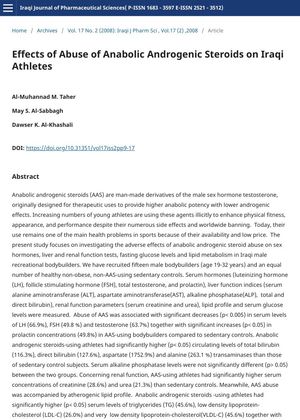
TLDR Abuse of anabolic steroids in Iraqi athletes leads to negative effects on hormones, liver and kidney function, blood sugar, and cholesterol levels.
The 2017 study "Effects of Abuse of Anabolic Androgenic Steroids on Iraqi Athletes" investigated the adverse effects of anabolic androgenic steroid (AAS) abuse on sex hormones, liver and renal function tests, fasting glucose levels, and lipid metabolism in 15 Iraqi male recreational bodybuilders aged 19-32 years, compared to 15 healthy non-obese, non-AAS-using sedentary controls. The study found that AAS abuse was associated with significant decreases in serum levels of luteinizing hormone (66.9%), follicle stimulating hormone (49.8%), and testosterone (63.7%), and significant increases in prolactin concentrations (49.8%). AAS-using athletes also had significantly higher levels of total bilirubin (116.3%), direct bilirubin (127.6%), aspartate (1752.9%) and alanine (263.1%) transaminases, creatinine (28.6%), and urea (21.3%) than controls. AAS abuse was also associated with an atherogenic lipid profile, with significantly higher serum levels of triglycerides (45.6%), low density lipoprotein-cholesterol (26.0%), and very low density lipoprotein-cholesterol (45.6%), and significantly lower serum concentrations of high density lipoprotein-cholesterol (31.3%). The study concluded that AAS abuse induces unfavorable body functions and undesirable side effects.
